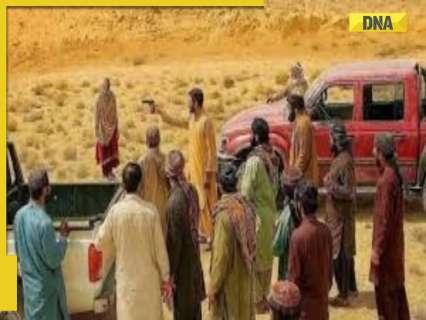Health
Couple Killed in Broad Daylight for ‘Illicit Affair’ in Balochistan

A disturbing incident in Balochistan, Pakistan, has drawn international attention after a couple was shot dead in broad daylight, allegedly for engaging in an ‘illicit affair.’ The killing, reported to have been ordered by a local tribal elder, highlights the ongoing issue of honour killings in the region. Following the incident, police arrested at least 11 individuals, including those believed to have been involved in the murder.
According to footage circulated on social media, a woman wrapped in a shawl is seen walking in front of a vehicle. In the video, she speaks in the local Brahvi language, stating, “You are only allowed to fire at me, nothing else.” The man accompanying her, armed with a pistol, opens fire, hitting her multiple times. The gruesome nature of the event has sparked outrage and condemnation from various quarters.
Understanding Honour Killings
Honour killings occur when a family member, often under the guidance of a tribal leader or local authority, believes that a woman has brought shame to the family or community. Such actions can be justified by social norms that dictate strict adherence to traditional gender roles. The motivations behind these killings can include disapproved relationships, seeking divorce, or simply a refusal to conform to societal expectations.
The recent case is not an isolated one. In 2016, social media influencer Qandeel Baloch was murdered by her brother, highlighting the severe consequences faced by women who challenge conservative norms in Pakistan. Bugti, the Chief Minister of Balochistan, described the latest incident as “intolerable” and a “blatant violation of social values and human dignity.”
Statistics and Wider Context
According to the Human Rights Commission of Pakistan (HRCP), at least 335 women and 119 men were killed in honour killings across the country in the previous year. This staggering statistic underscores the pervasive nature of the issue. While Pakistan faces significant challenges with honour-related violence, it is not alone. Reports from the UN Special Rapporteur indicate that honour killings have been documented in various countries, including Egypt, Jordan, Lebanon, and Turkey. Furthermore, migrant communities in Western nations, such as France, Germany, and the United Kingdom, have also seen instances of these tragic events.
The issue of honour killings remains a pressing global concern, affecting numerous cultures and communities. As awareness increases, there is a growing demand for legislative and social changes to protect individuals from such violence. The recent tragedy in Balochistan serves as a stark reminder of the urgent need for reform and advocacy against honour-based violence in all its forms.
-

 World5 months ago
World5 months agoSBI Announces QIP Floor Price at ₹811.05 Per Share
-

 Lifestyle5 months ago
Lifestyle5 months agoCept Unveils ₹3.1 Crore Urban Mobility Plan for Sustainable Growth
-

 Science4 months ago
Science4 months agoNew Blood Group Discovered in South Indian Woman at Rotary Centre
-

 World5 months ago
World5 months agoTorrential Rains Cause Flash Flooding in New York and New Jersey
-

 Top Stories5 months ago
Top Stories5 months agoKonkani Cultural Organisation to Host Pearl Jubilee in Abu Dhabi
-

 Sports4 months ago
Sports4 months agoBroad Advocates for Bowling Change Ahead of Final Test Against India
-

 Science5 months ago
Science5 months agoNothing Headphone 1 Review: A Bold Contender in Audio Design
-

 Top Stories5 months ago
Top Stories5 months agoAir India Crash Investigation Highlights Boeing Fuel Switch Concerns
-

 Business5 months ago
Business5 months agoIndian Stock Market Rebounds: Sensex and Nifty Rise After Four-Day Decline
-

 Sports4 months ago
Sports4 months agoCristian Totti Retires at 19: Pressure of Fame Takes Toll
-

 Politics5 months ago
Politics5 months agoAbandoned Doberman Finds New Home After Journey to Prague
-

 Top Stories5 months ago
Top Stories5 months agoPatna Bank Manager Abhishek Varun Found Dead in Well









